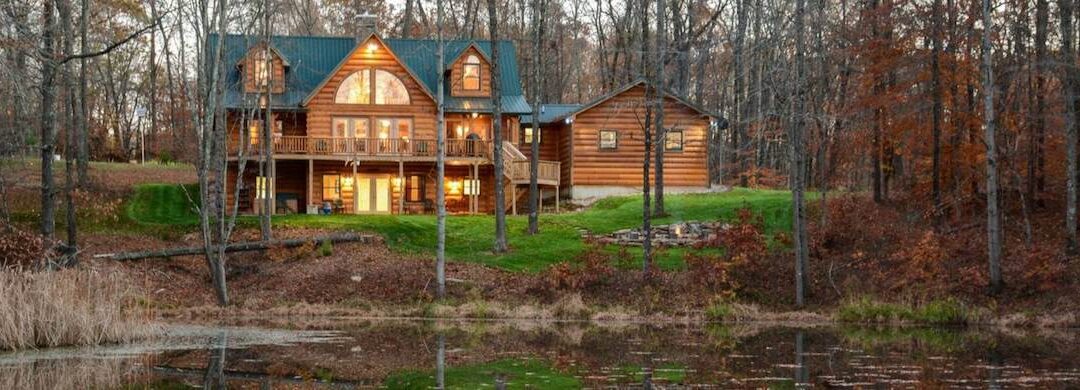Plan ahead for financing.
Building a new log or timber home is an exciting process. You’re setting up a new place to live or vacation, and if you’re opting for this type of home, chances are you’re making something of a project out of it. A log or timber home can fit into a certain vision a lot of people have for a property they can make their own, or one that will reflect their personality.
And as a vacation property, it can be particularly alluring almost as an extension of nature — a place where the whole family wants to gather to get away for a bit.
All of this speaks to why so many people ultimately explore the idea of a log or timber home. The challenge many of these people ultimately face, though, is how to finance such a project with minimal disruption to personal finances. On that front, we have some suggestions to keep in mind if and when you go through the process one day.
Know Your Plans in Advance
This tip is particularly important if you’re starting from scratch and having a log or timber home built for you. If this is the case though, you’ll want to have all of your plans in place before you get too deep into financing. The idea is that up-front pricing can be difficult for a built-from-scratch property. Builders won’t always have accurate estimates until a thorough floor plan is developed — and mortgage and insurance providers will also be operating in the dark.
All this means is that you’ll want to figure out detailed plans for the property before any specific financing decisions are made. Once the project is ready to start, you’ll have a clearer idea of costs across the board, and you’ll be able to address them strategically.
Look Into Construction Loans
If this is your first time having a home built for yourself, it’s important to know the difference in the types of loans you might need. When you’re buying a home that already exists, opting for a long-term mortgage is typically the go-to strategy. Having a home built, however, may require a construction loan. This is an arrangement described as a “higher-interest, shorter-term loan” that is designed to cover the actual cost of building the home.
Whereas a normal home loan will pay you the entire cost of a home upon closing, a construction loan typically goes to the builder and is paid in periodic “draws” to cover costs in real time. The specifics of the loan are based on projected value (another reason to get all your plans in order before you look into financing) and in the end the total cost of the project is transferred back to you. So, essentially, this kind of loan ensures that materials and construction are efficiently paid for.
Look Into Personal Loans
Between mortgage agreements, home loans and construction loans, there isn’t always a whole lot of focus on the personal with regard to property purchases. At the same time though, there’s no reason not to explore this sort of arrangement, even if it’s ultimately a means to pay off the first few installments on a home or construction loan more easily.
The advantage of a personal loan as opposed to some other arrangement is that it can be set up such that there are no fees, and the APR is fixed. This eliminates the potential for surprise costs and tends to be part of a relatively straightforward repayment schedule. A personal loan can also be accumulated based on personal finances rather than via home collateral. So, while some won’t like the idea of accumulating multiple loans, it is something to consider. A personal loan with a more easy-going repayment schedule may give you the lump sum you need to knock out some early home payments that are more burdensome in nature, effectively transferring part of your balance to the personal loan.
Rent Out the Property
This is not a traditional financing tip, but depending on your circumstances it’s something that may be worth considering. Today, services like Airbnb and its competitors make it easier than ever to rent out a home, and the potential profits can be close to $1,000 a month or more if it’s a good home in a good location. Bear in mind that there are costs associated with setup and upkeep as well, but a well-managed home can become a legitimate source of income.
For this reason, if your circumstances allow for it, you might think about using the home to finance itself. This could be done, for example, by having the home built a year before you’re ready to move or use it yourself and rent it out in the interim. This can yield several thousand dollars at minimum, which can help you to address early payments and knock out a portion of the total cost before you even start to use the home.
Hopefully these tips have given you a few things to think about as you look ahead to financing your log or timber home!
Special to Honest Abe Living by Rozmin Jacee

